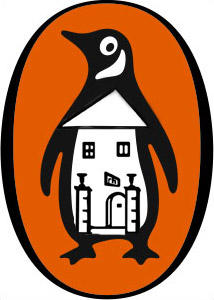 There seems to be some controversy in Canada over a recent statement by Brad Martin, head of Penguin Random House Canada, in a column discussing the PRH merger. Martin said, “I’m not interested in a book that is going to generate less than $100,000 in revenue unless the editor or publisher has a compelling vision for the book and/or the author.” This has set the cat among the pigeons north of the border.
There seems to be some controversy in Canada over a recent statement by Brad Martin, head of Penguin Random House Canada, in a column discussing the PRH merger. Martin said, “I’m not interested in a book that is going to generate less than $100,000 in revenue unless the editor or publisher has a compelling vision for the book and/or the author.” This has set the cat among the pigeons north of the border.
Some, such as Anvil Press publisher Brian Kaufman, think that’s unrealistic—most books in Canada don’t sell at anywhere near those figures. Others, such as UBC creative writing head Steven Galloway, think that the figure is reasonable for a publisher of PRH’s size.
“I think people who are upset about this comment don’t understand how publishing works,” [Galloway] says. “For a book to generate $100,000 in revenue, it needs to sell between 7,000 and 10,000 copies, depending on the list price of the book. That’s not an unreasonable number for a publisher like PRH, which does not receive any government funding, to use as an economic benchmark. A book which is sold to 0.03 per cent of the population does not indicate a craven commitment to profit — it indicates a prudent wish to stay in business.”
Regardless of whether the figure is reasonable, it’s not exactly a surprise. The big publishers have been focusing on bestsellers at the expense of midlist writers for years, whether it’s in the US or Canada. For the head of a major publishing house to come out and set a $100,000 minimum actually seems refreshingly honest to me.
Meanwhile, more and more authors are finding success self-publishing their own works, so at least that’s something.

































This is not unreasonable at all for a major publisher.
In fact, if the the book is a tradeback selling for $15.95, the publisher is lucky to get 50 percent of the list price or $7.97 per copy. To get earn $100,000 in revenue the publisher would have to sell 12,539 copies. What’s more, just because a publisher receives $100,000 in revenues, this doesn’t mean the publisher has made a profit on the book. There is also the fact that the book will not sell 12,500 copies or whatever the publisher estimates. Take for example a book that was written by an author in my home town. The author received a $200,000 advance (nonrefundable) from a major publisher. So the publisher must have estimated sales of at least 50,000 copies. Yet the book fewer than 5,000 copies. My estimate is that the publisher took a loss of over $250,000 on this book when the marketing costs, advance, and all overhead costs are factored in.
Steven Galloway is right. Most people don’t understand how publishing works. Indeed, as Bhagwan Shree Rajneesh (Osho) once said, “The less people know, the more stubbornly they know it.”
It’s a tough thing to say something like this, but I do completely agree, that it’s best to set a bar by which publishers can expect to earn a reasonable return on their investment. I’ve been in the publishing industry, mostly in sales and sales management, for over 30 years now and have witnessed many more bad decisions to publish a book than good ones. I had my own bar of 10,000 “projected” units when I was publishing books for a few years. I really thought that if the Canadian publishing industry was to continue to thrive, that it was best to be very selective about which books could actually pay for themselves, and all that went with it. I don’t disregard the fact that writing is an art and that it should be honoured and treated with respect… but at what cost? There comes a point where the business of publishing must come first, so that the art can survive. Mr. Martin does have the luxury of working for one of the largest multi-national publishers in the world, but at the end of the day, there is a bottom line that his job, and all of our jobs, relies on and I’m glad to hear that there is some foresight given to this indisputable fact.